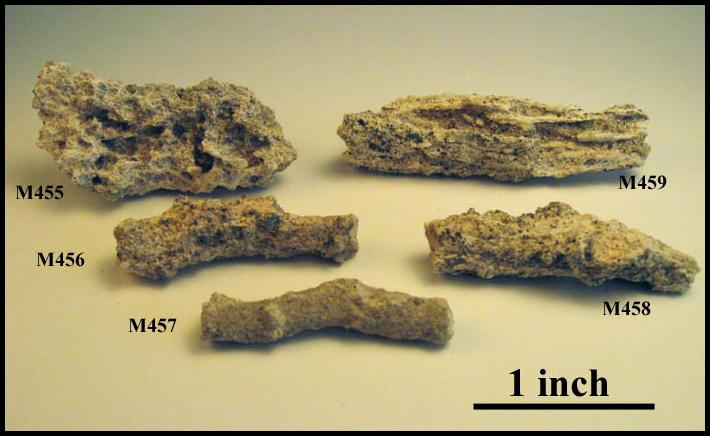Home | About Me | Jewelry Designs | Gemstones | Mineral Specimens | Orders | FAQs | Contact | Links |
||
 |
||||
 |
||||
Okay, so I wasn't looking for fulgurites when I found these oddities. I was hiking around a volcanic field on the New Mexico/Mexico border looking for gem quality peridot. There didn't seem to be much peridot on the US side of the rickety old barbed-wire fence (the US/MX border), so I had crawled through to see what mother nature had deposited to the south. Of course a big black US Border Patrol helicopter had to fly over at that moment (seen here). Spotting my truck near the border, and me on the MX side of the fence, the border patrol decided to land and see what I was doing. After explaining to the friendly, but gun-toting, border patrol agent that I was just looking for rocks, I climbed a small hill to get a photo of the helicopter as it took off in a cloud of dust. It was about then that I noticed, lying on the ground, all these little white finger-long sections of material that I at first thought were bone or fossil roots. Finally coming to the realization that there shouldn't be any fossils on a volcanic tuff hill partially covered with wind-blown sand, I picked up a couple sections and studied them more carefully. Eureka: I had found my first fulgurites! For those of you unfamiliar with fulgurites; they are the result of lightning striking the earth and locally melting the sand. As the lightning strikes the ground, and passes downward through the sand, the sand is instantly superheated, and fused into twisting branching tubes. The tubes take on shapes that decrease in size as they descend into the sand. The fulgurites may be nearly hollow, or nearly solid tubes of fused glass-like material. The exterior of the fulgurites are often rough with adhering, unfused sand. The fulgurites I found, shown above, are nearly solid. Careful examination of the cross sections using a hand lense will show 0.5-1.0 mm hollow tubes that seem to extend the length of the fulgurite (and out the branch points). The fused earth resulted in a creamy-white porcelain-like material that is coated with unfused sand paticles. Maybe these fulgurites aren't gem-quality peridot, but they are just about as rare and certainly are unusual. Prices are based on size and quality: |
||